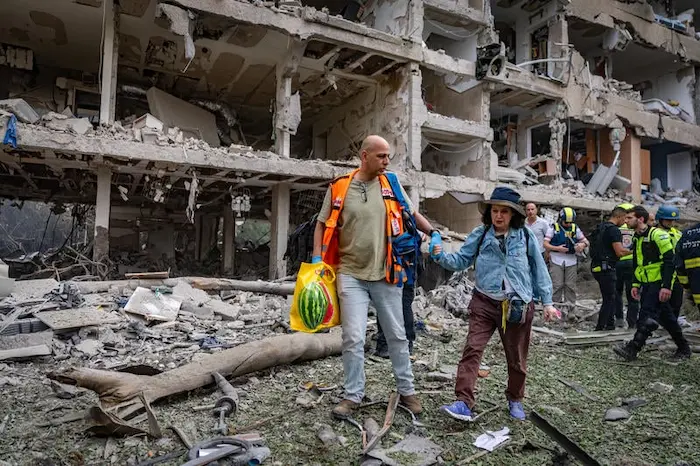
A fragile ceasefire between Israel and Iran is holding after 12 days of intense conflict
The 12-Day War: A Flashpoint Ignites
Israel-Iran Truce – The conflict erupted on June 13, 2025, when Israel launched a surprise offensive targeting Iran’s nuclear and military infrastructure. The strikes, justified by Israeli officials as preemptive action against Iran’s alleged nuclear weapons development, triggered a swift and deadly response. Iran retaliated with missile and drone attacks, some of which penetrated Israel’s Iron Dome defenses for the first time in years.
The violence escalated rapidly, drawing in the United States. On June 22, the U.S. launched “Operation Midnight Hammer”, a series of airstrikes on Iran’s key nuclear sites, Fordow, Natanz, and Isfahan. President Donald Trump hailed the operation as a “spectacular success,” claiming it had “obliterated” Iran’s nuclear capabilities. However, intelligence reports later suggested the damage may have only delayed Iran’s program by a few months.
By the time the dust settled, over 950 people were dead in Iran and 28 in Israel, with thousands more injured. The war also disrupted global air travel, spiked oil prices, and triggered evacuations of foreign nationals, including over 3,000 Indians under Operation Sindhu.
Ceasefire Brokered, But Not Beloved
On June 24, a ceasefire was announced, brokered by the United States and Qatar. Both Israel and Iran claimed victory, but the truce was shaky from the start. Initial violations occurred within hours, with explosions reported in Tehran and retaliatory missile launches targeting a U.S. airbase in Qatar.
Despite these breaches, the ceasefire has largely held as of June 26, thanks in part to direct intervention by President Trump, who reportedly ordered Israeli jets to stand down mid-flight. Trump’s envoy, Steve Witkoff, described upcoming talks with Iran as “promising,” though skepticism remains high.
Iran’s President Masoud Pezeshkian declared the ceasefire a “great victory,” while Israeli Prime Minister Benjamin Netanyahu claimed the war had eliminated two existential threats: nuclear annihilation and missile saturation. Yet, both sides continue to posture militarily, and Iran has extended its airspace closure, signaling ongoing caution.
Peace or Pause? The Road Ahead
While the ceasefire has brought temporary relief, the underlying tensions remain unresolved. Iran insists its nuclear program is peaceful, but the U.S. and Israel remain unconvinced. The destruction of nuclear sites may have bought time, but not trust.
Diplomatic efforts are underway, with U.S.-Iran talks expected next week, but the path to lasting peace is fraught. Iran’s missile strike on the U.S. base in Qatar, though calibrated, shows it’s willing to push back. Meanwhile, Israel’s military remains on high alert, and regional players like China and Russia are watching closely, hosting defense summits and signaling shifting alliances.
The ceasefire has also had ripple effects beyond geopolitics. Global markets are stabilizing, but the human cost from civilian casualties to displaced families remains staggering. The UN has called for restraint, and India has offered to mediate, reflecting the international community’s desire to prevent a relapse into war.
Conclusion:
The Israel-Iran ceasefire is a welcome pause, but not a resolution. With both sides claiming victory and preparing for the next move, the world watches anxiously. Whether this truce marks the beginning of peace or merely the eye of the storm remains to be seen.
Stay updated with the latest news on Rapido Updates. Keep yourself updated with The World, India News, Entertainment, Market, Automobile, Gadgets, Sports, and many more
Doomsday in Motion: B-2 Bombers Deployed to Guam Amid Iran-Israel Crisis, World on Edge